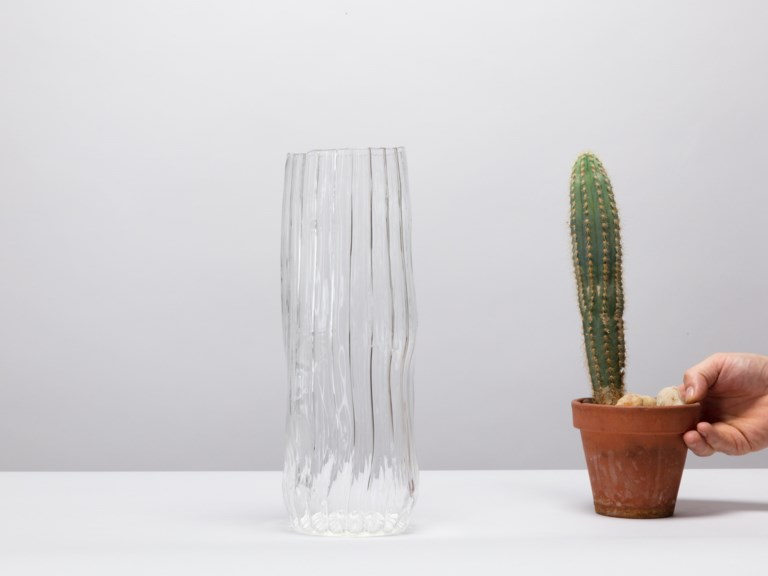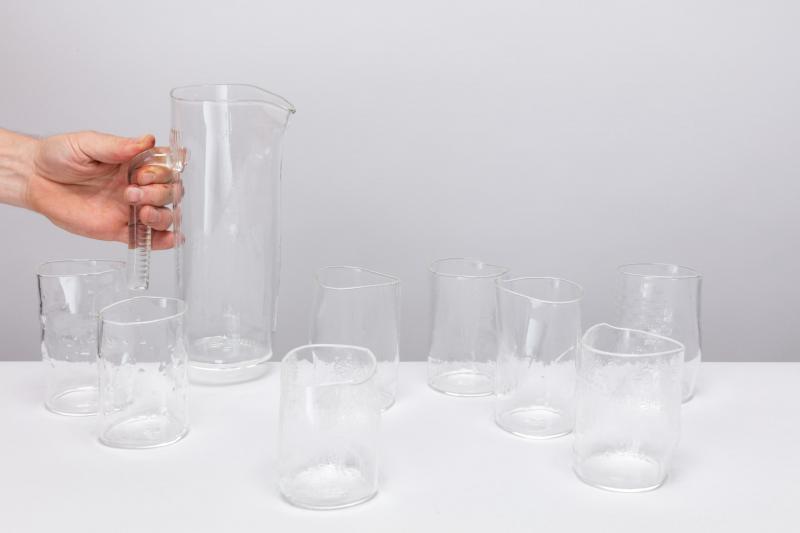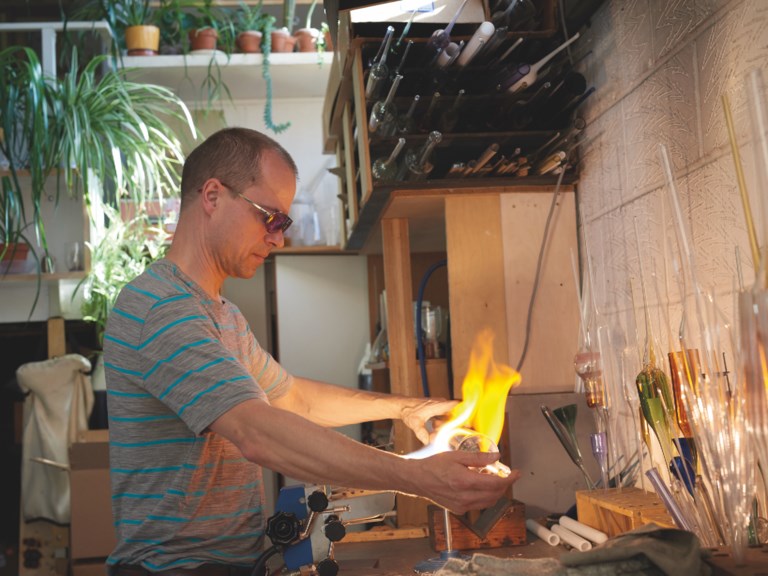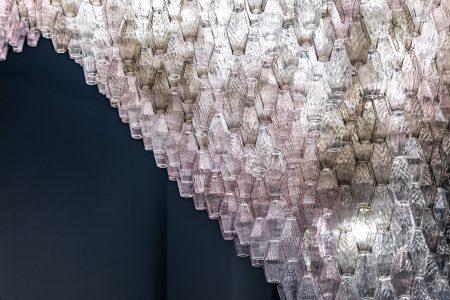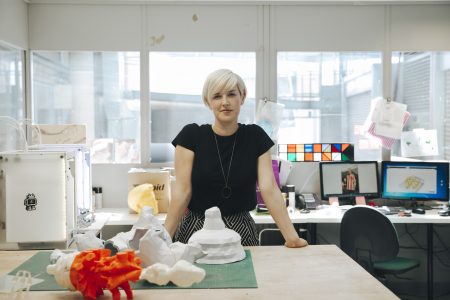Jochen Holz Passes the Torch
With his new solo show, titled Superficies, the German artist tests the rich possibilities of the lampworking glass technique
In fourteenth-century Murano, glass manufacturers would use oil-fueled lamps to melt glass; once malleable, the artisans would blow and shape the material. Today, the few makers who still use the lampworking technique recur to torches with butane, propane or natural gas to work with glass.
One of them is London-based German artist Jochen Holz, who is showcasing a series of objects made via lampworking. In Superficies, an exhibition taking place in Notting Hill’s Flow Gallery, he focuses on “the materiality of borosilicate glass and a unique process to produce rich textures and complex shapes.”
Among those shapes are striped containers with concave windings that look, upon first inspection, like blowing mistakes. Quite the contrary: they’re actually premeditated —he jokingly calls them his wobbly glass vases. “Glass is often seen as a material of ultimate perfection, valued for its highly polished transparency and vibrant colours,” Holz explains. “I aim to disrupt this perfection and to break down the pristine nature of glass.”
Coming from someone who has previously experimented with cheese graters to beautifully and cheekily alter the surface of glass objects, we’d say he has indeed succeeded in his disruptive plans.
Superficies is on display at Flow until June 30
